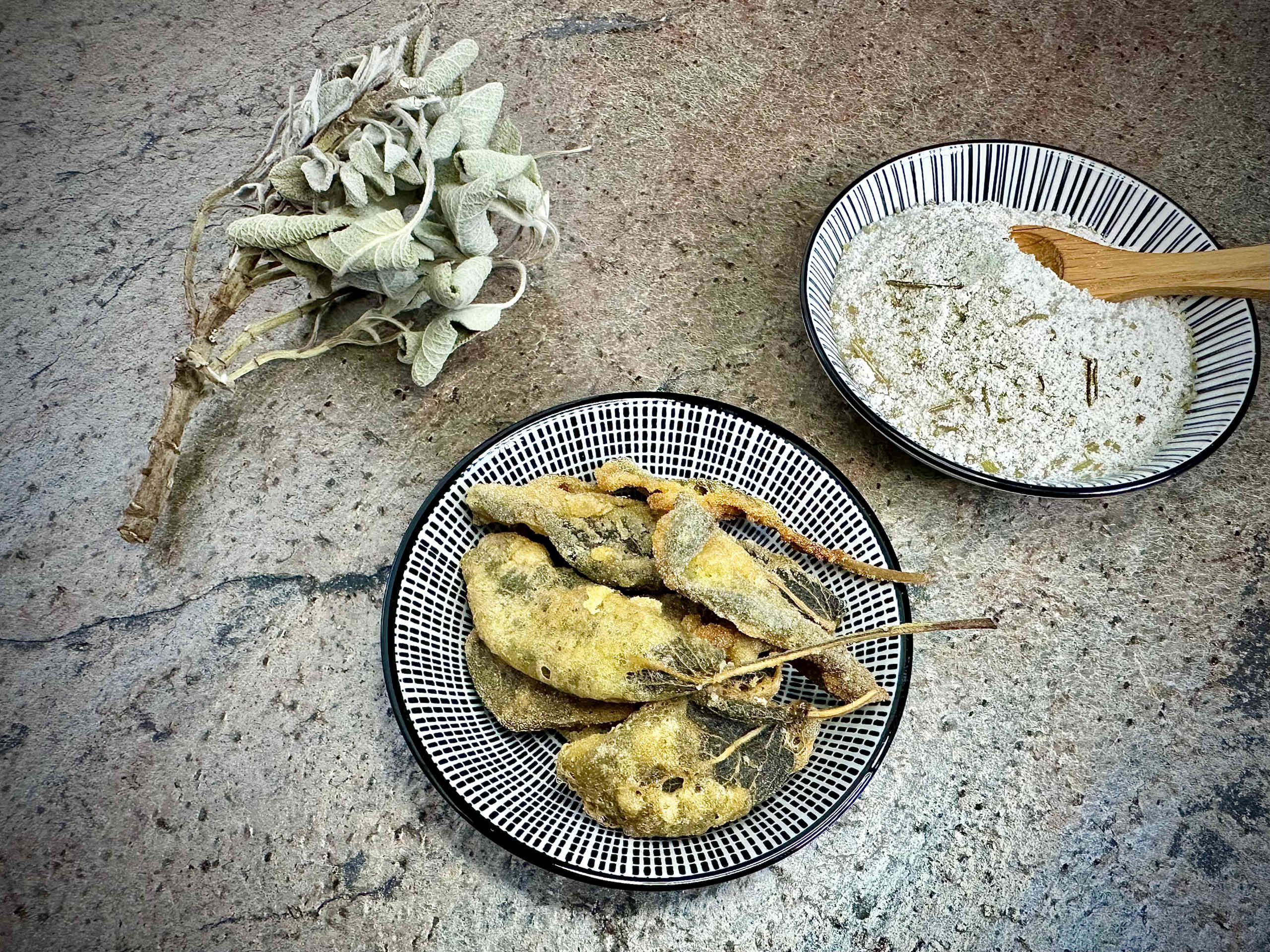Crispy fried sage leaves with rice flour
Sage is a true miracle cure from nature that has been valued for its healing properties for centuries. Its antibacterial, antiviral and anti-inflammatory effects make it a versatile companion in the medicine cabinet, especially for sore throats and digestive problems. But sage is not only useful as a medicinal plant – in the kitchen, the aromatic herb brings an intense taste and a special note to many dishes. Whether fresh, dried or fried until crispy as in this recipe, sage impresses with its versatility.
Why should you only consume sage in moderation?
However, it is important to consume sage in moderation. The thujone it contains can cause headaches or dizziness if consumed in excess, which is why it is only recommended to a limited extent, especially for pregnant women, small children and people with epilepsy. However, in moderate quantities it is a delicious and healthy addition to the plate – like in this recipe for crispy fried sage leaves with rice flour.
How healthy is sage?
Sage is a real power plant with healing properties. Its antibacterial, antiviral and anti-inflammatory properties make it a popular remedy for treating colds, sore throats and digestive problems. But be careful: in large quantities, the thujone it contains can have negative effects and, among other things, cause headaches, drowsiness or dizziness.
How to use sage in the kitchen?
Sage is often dried or used as a tea, but it also has many uses in the kitchen. Whether as a seasoning for meat and fish, in sauces or as a crispy topping – sage always brings a special flavor. An insider tip is to toss sage leaves in hot butter, which intensifies the flavor and gives them a crunchy texture. Fried sage leaves, like in this recipe, are a simple yet sophisticated way to showcase the herb.
Who should avoid sage?
Although sage offers many health benefits, there are also groups of people who should be cautious about consuming it. Pregnant women, small children and epileptics should only consume sage in moderation, as the essential oils in higher doses can cause unwanted side effects such as shortness of breath or nervousness. However, for most adults, moderate consumption is harmless and very beneficial.
Simple and crispy
The following snack is not only incredibly delicious, but also easy to prepare. The crispy sage leaves are perfect as antipasti, as a sophisticated eye-catcher on an appetizer platter or as a crispy topping for various dishes. Fresh from the garden and wrapped in a simple dough coating, the sage becomes a culinary highlight.
Preparation time: 25 minutes

INGREDIENTS
- 15 – 20 fresh sage leaves
- 3 tbsp rice flour
- 1 egg
- Salt to taste
- Vegetable oil for deep frying
PREPARATION
- Wash the sage leaves carefully and pat dry thoroughly.
- In a small bowl, beat the egg with a fork until fluffy, then add the rice flour and a pinch of salt. Mix everything well until a smooth dough forms.
- Dip the sage leaves one at a time into the batter so that they are completely covered.
- Heat plenty of vegetable oil in a pan. Fry the sage leaves over medium heat until golden and crispy. Caution: Only fry the leaves briefly to prevent them from becoming bitter.
- Drain on kitchen paper and sprinkle with a little salt if desired.
- Serve the crispy sage leaves warm or cold – ideal as a snack or as a topping for salads, pasta or meat dishes.
Sage can be enjoyed wonderfully in combination with other Mediterranean herbs such as rosemary and lavender.